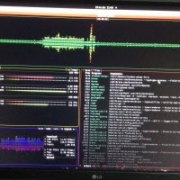The solution is used when you want to handle policies with the file. There are different ways you can use it, like in the firewall rules and in proxy rules, and to secure emails. The tool was used very much when there were emails with other set files, and then it would all be checked in the firewall.
It is a basic tool tool, and it does very well for what it is supposed to do. It does simple checks against signatures. I think it is very much what it needs to be, and it is a basic tool that you just use.
There were a little bit of problems with the tool's updates, making it an area where improvements are needed. Sometimes, the firewalls did not get updated in the databases.
I have been using WatchGuard Gateway AntiVirus for over ten years.
The tool is so simple to use. Stability-wise, I rate the solution a nine out of ten.
The scalability depends on how many firewalls you have, and you can put every firewall in it which takes part in the gateway on device checking. Scalability-wise, I rate the solution a ten out of ten.
In my company, there are around 50 people who use the tool. My company also has sister concerns and head offices using the tool. I know that sister concerns are using the same WatchGuard devices as the main company.
I don't think I need any technical support from the website, as it is a basic product. You just plug it in where you need it and then use it. I went through some basic training, and after that, I don't think I ever had to ask someone something. You just put it on and make sure that it can connect to the outlet server.
I know about a lot of different tools, but I have been working with WatchGuard for almost all of my career, as it offers services with which you just connect to the ISPs and firewalls, after which you can put the settings on, but for most of my career, I have been working with WatchGuard.
During the product's installation phase, you just put the tool in the right place, and it works.
The solution is deployed on an on-premises model.
The solution can be deployed in a couple of minutes. The installation process is so basic that I don't even remember what you need to do. You just put the tick marks in the tool and ask the tool to use them. In the rules, where you see the files go through is where you can think over what to do with the files. With the tool, you just need to put it on, and then the default rules make sure that there is some indication that something is wrong.
My company manages everything associated with the tool by myself. I was also involved in the tool's maintenance. As a small team, we all can do it.
Every pair has a license, especially for commercial products. For what we use, the tool's price has been reasonable, but it is not the cheapest. The tool has been quite reasonable.
The tool's cost includes various things, like licenses and support. If you buy basic licenses for the device, everything is included, making it easy to use. If one is very expensive and ten is absolutely cheap, then I rate the tool's price as a six.
It is the basic starting tool. We used different tools in the company. In our gateway, we used WatchGuard because we used WatchGuard's firewalls. It was very easy to set it up. It was used so that if there was anything you needed, you could just use the tool, and then we had different tools for workstations.
The tool is a basic product. You usually start with it, and you make sure that everything goes through your devices. If there is a possibility to check the file that is going through your firewall, you do it. If you catch something, then it is very good, and it is much easier to do when no user has access to it. You just need to use the tool at the start, as it makes the end part easier to manage. It doesn't distract your attention from other tasks. It just works, and you don't need to distract yourself.
If users are downloading something from somewhere, the tool makes sure that the easy issues don't get through. Everything else can work a little less because it takes the easy issues out, so it is the backbone for doing the checks. When it can do its checks and block the infected files, it does it very well and easily. When there are different cases where it cannot act as an antivirus gateway that cannot touch files, then you may need different tools, especially if you don't use WatchGuard products for your emails, so you will need to have something on the email side of things. If you are using web emails and trying to transfer them through your firewalls, then it checks the files and says what is not good.
There are bad elements trying to find different ways to get the files through, and they already know their bad deeds very well. They are finding ways to pass your checks and basic things, and so they are always training their people to find better tools to help them in their job to find what needs to be accessed, making it the biggest challenge for the tool to overcome. The tool is good at the start, but it is not so good until the end. You need to be vigilant about changes. I think what is needed is that one gets a view of his or her network so that you know what is happening in your network. Antivirus and firewall products can be a part of our network, and they provide logs so you can see the logs and what is happening in your network. Providing the big picture of your network is what I think we need to do a little bit of a job now.
I have not used the tool's AI features. Someday, I may use it.
It is a very good product for how it works and does its job, but it is not an all-inclusive solution. It does its job very well, and it is quite easy to put to use. You need to get different views of what is happening in your network and what is coming into your network. Suppose the network traffic is going to interrupt it. If you don't go to the SSE proxy settings or you aren't allowed to do it also, then it cannot take all the traffic. If there are possibilities for the traffic to go through, or it cannot check-in, then we need to understand that all the products cannot do it all.
I rate the tool an eight out of ten.
















